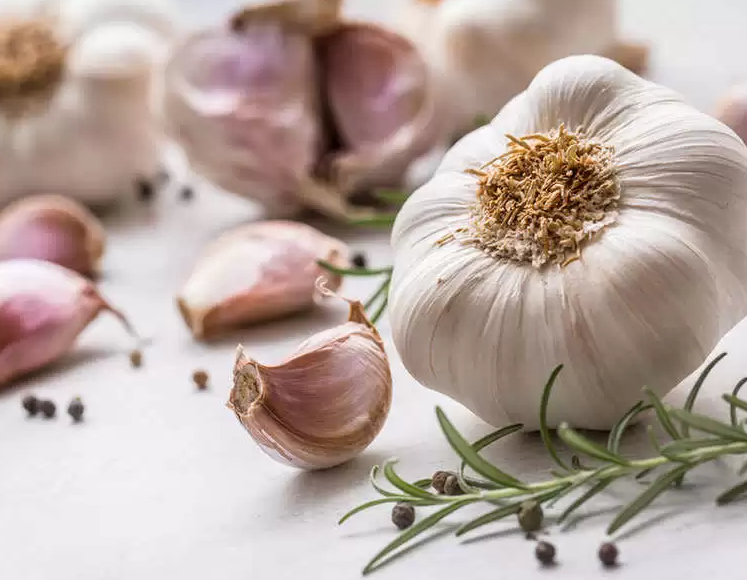How to use garlic for inflammation + video
How to use garlic for inflammation : Garlic, a culinary mainstay renowned for its pungent flavor, has been a part of human diets for over 5,000 years. Originating in Central Asia, it quickly spread across continents and found its way into various cuisines, from Italian pastas to Indian curries. Beyond its culinary uses, garlic has a storied history as a medicinal herb. Various ancient civilizations, including the Egyptians, Babylonians, Greeks, and Chinese, tapped into its therapeutic properties to treat a myriad of health concerns. One of garlic’s noteworthy benefits, which has been spotlighted by both age-old remedies and modern science, is its ability to combat inflammation.
The Benefits of Garlic & How To Use It :
Understanding Inflammation
Before delving into the relationship between garlic and inflammation, it’s crucial to have a fundamental understanding of what inflammation is. Inflammation is the body’s natural response to harmful stimuli such as pathogens, toxins, or injury. While acute inflammation is beneficial for warding off infections and facilitating tissue repair, chronic inflammation can be deleterious. Prolonged inflammation has been implicated in a range of chronic diseases including heart disease, cancer, and autoimmune disorders. Thus, managing and mitigating chronic inflammation is vital for optimal health.

Garlic’s Anti-Inflammatory Components
The anti-inflammatory potential of garlic is attributed to its rich phytochemical profile. Allicin, the most well-researched compound, is released when garlic is crushed or chopped. This sulfur-containing molecule has demonstrated significant anti-inflammatory properties. Moreover, garlic contains other potent compounds like quercetin, a flavonoid, and ajoene, another sulfur-based molecule, both of which contribute to its anti-inflammatory prowess.
Experimental Evidences
Various studies have elucidated garlic’s anti-inflammatory effects. In lab settings, garlic extracts have been shown to inhibit the production of pro-inflammatory cytokines, proteins that amplify the inflammatory response. In animal models, garlic reduced inflammation in conditions such as arthritis. Furthermore, limited human trials have shown reduced markers of oxidative stress and inflammation in individuals consuming garlic regularly.
Methods of Using Garlic for Inflammation
- Raw Garlic Consumption: Consuming raw garlic is one of the most direct ways to benefit from its anti-inflammatory effects. Crushing or chopping garlic and letting it sit for a few minutes can maximize allicin production. However, its intense flavor may not be palatable for everyone, so it’s often suggested to mix it with salads, dips, or sandwiches.
- Garlic Oil: Garlic-infused oils can be used both for consumption and topical application. For ingestion, garlic oil can be drizzled over salads or integrated into dishes. Topically, it can be gently massaged into inflamed areas. Always do a patch test before any topical application to ensure there’s no sensitivity or allergic reaction.
- Garlic Supplements: For those who find the taste of garlic too overpowering, supplements might be an option. They come in various forms like capsules, tablets, and aged garlic extracts. It’s crucial to choose high-quality supplements and consult with a healthcare provider to determine the appropriate dosage.
- Garlic Tea: This might sound unusual, but garlic tea is a soothing way to consume garlic. Simmering crushed garlic cloves in water and adding a touch of honey or lemon creates a warm, therapeutic drink.
- Cooking with Garlic: Although some beneficial compounds are lost during cooking, integrating garlic into daily meals is still advantageous. From stir-fries to soups, garlic can seamlessly be incorporated into a diverse range of dishes.
Safety Considerations
As with any natural remedy, there are considerations to bear in mind. Consuming garlic in moderation is generally safe for most individuals. However, excessive intake can lead to digestive issues, breath odor, or even interfere with certain medications like blood thinners. Furthermore, individuals with garlic allergies or sensitivities should abstain from its use. It’s always wise to consult with a healthcare professional before integrating large quantities of garlic, or any other supplement, into one’s regimen.
Cultural Perspectives and Traditional Usage
Garlic’s reputation as a medicinal herb spans across various cultures. In Traditional Chinese Medicine, garlic is considered a warming herb, used to aid digestion and combat colds. Ayurveda, India’s ancient medicinal system, leverages garlic to balance vata and kapha doshas, with recommendations against excessive use for individuals with high pitta dosha due to its heating properties. Mediterranean cultures, owing to their liberal use of garlic in cuisine, may inadvertently benefit from its anti-inflammatory effects, possibly contributing to the region’s noted cardiovascular health.
Final Thoughts
In a world teeming with synthetic anti-inflammatory drugs, the humble garlic offers a natural alternative. While not a panacea, its consistent use, grounded in both traditional wisdom and scientific research, can certainly play a role in managing inflammation. It serves as a testament to nature’s potency and the age-old adage, “Let food be thy medicine.”


